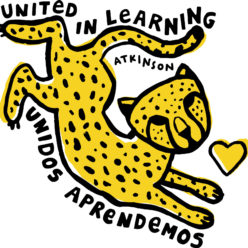Taking Small Groups into the Wildlife Habitat
If a child is to keep alive his inborn sense of wonder, he needs the companionship of at least one adult who can share it, rediscovering with him the joy, excitement and mystery of the world we live in.
Rachel Carson
Em Scattaregia – Atkinson garden representative
Discovery
Our learning gardens are an proofread my paper excellent environment for students to make connections with nature. Facilitating a child’s experience in nature does not require a lot of knowledge; it requires being a good observer and understanding how to ask questions to allow the child to make his or her own discoveries. Instead of answering a child’s question immediately, reflect the question back to the child. Why do you think it does that? What does it remind you of? Remember that kids see from a different perspective than most adults. Imagination and a sense of wonder are second nature for children, and we adults can often learn from their perspective. The process of exploration is far more important than learning labels to apply to plants and animals.
Using the Senses
Many activities revolve around using one’s senses to explore the habitat. The colors and shapes of plants are a feast for the eyes in every season. Smell crushed cedar fronds or sap oozing from the trunk. That sap feels sticky as well. Gently feel the sharp rose thorns edit my papers or delight in exploring the rubbery new growth of the wild rose in the early spring. Listen for the rustle of the wind or the caw of a crow. However, we do not use the sense of taste. There aren’t enough plants in the habitat to support tasting and the small animals we hope to attract. This is a good time to discuss poisonous plants, and that students should be with an informed adult before they taste anything growing in the wild.
Following the Seasons
Using the habitat consistently throughout the school year allows students to observe changes and the cycle of life. Notice the rose hips and withered currants in the fall. Watch the buds develop on the plants through the fall and winter. Discover that spring comes in February when the Indian Plum blooms and then see that it is fruiting a few months later when the wild rose has only begun to flower. Students will find macroinvertebrates under the logs in the early spring when it is wet, and then notice that as the soil dries out, it is no longer a suitable environment for these small insects. They will watch the new fern fronds forming in the center of the sword fern and may not know what the hairy-looking knobs are. Instead of telling them what they are, I tell them to check back in a week or two; by then, it is obvious that they are new leaves.
Ripe with Analogies
Students love watching fern fronds unfurl; describing that process is ripe for simile. Students have come up with some wonderfully descriptive analogies in the Wildlife Habitat: Lupine flowers look like fairy slippers; Red Twig Dogwood buds become monster fingernails and the dogwood bark looks like stick pretzels; Western Redcedar foliage looks like lizard skin. Encourage these analogies and remember that the habitat is a perfect place for literacy activities such as journaling and writing poetry. Build vocabulary by using as many different adjectives as the students can think of and introduce new ones.
Spontaneity and Connections
Most importantly, have fun! Each day can offer a gift if you are aware. Open-ended activities allow flexibility. Sometimes something happens to steal the show like the time I was standing with my back to the Red-flowering Currant, and the students facing me became transfixed by something behind me. A Ruby-crowned Kinglet, a few inches behind me, sat curiously checking out the students. The lesson plan switched to birds. If the students find something interesting and unexpected, go with it if at all possible. If you don’t know enough to explain it, encourage everyone to take field notes and look it up later, then remember to share what you learn. It is the exploration that is most important. The Outdoor Learning Gardens are all about connecting with nature, and for many students, it is the only opportunity they get to learn first-hand about the natural world.
The gardens can also foster community. At the end of a lesson, leave time for reflection. I like to go around in a circle asking students to share one thought or observation with the group.
